INNER SANCTUM MYSTERIES: The Complete Film Series (1943-45)
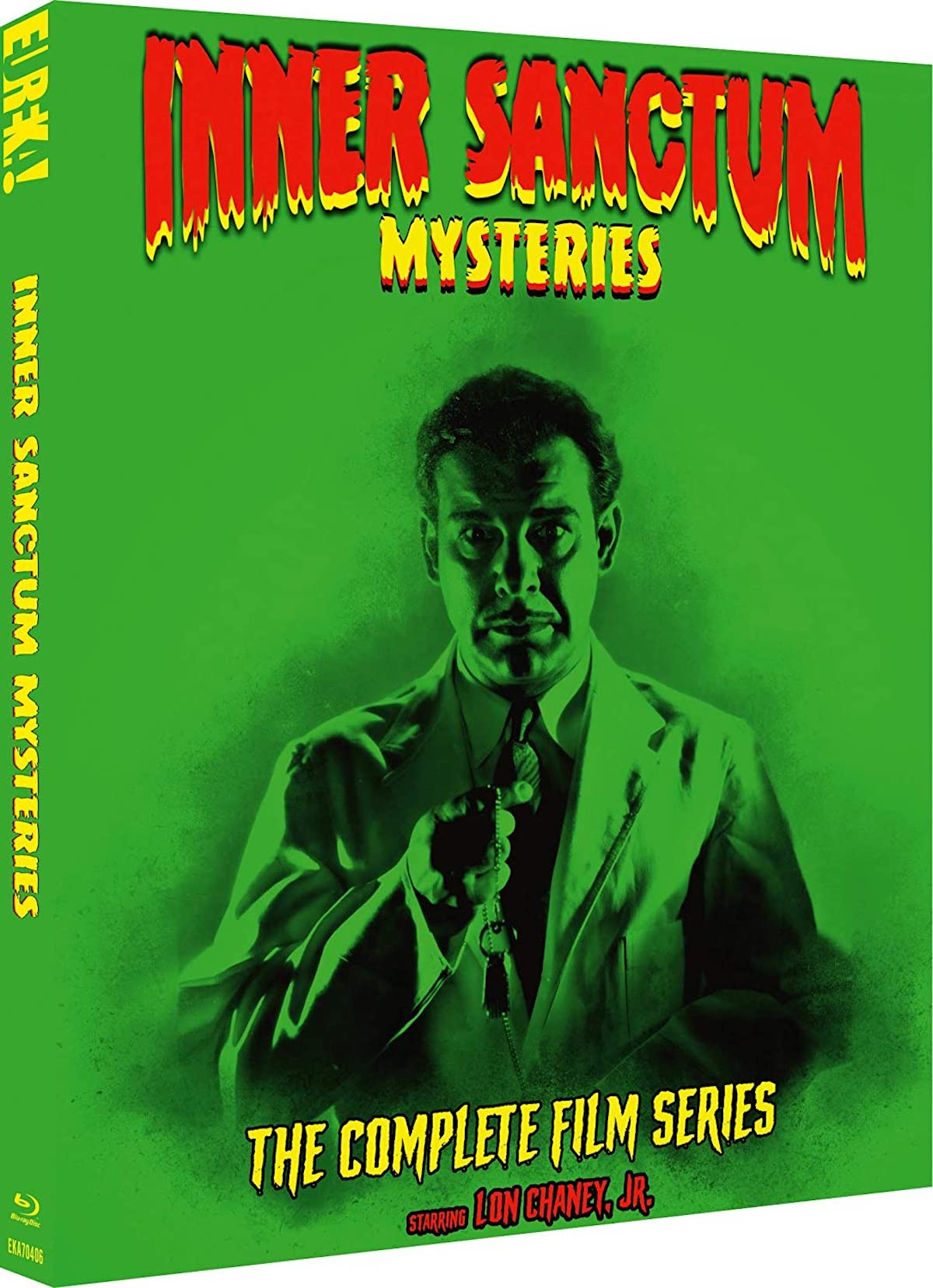


There are distinct shades of film noir in Universal’s Inner Sanctum series of B Movies, released between 1943-45, particularly in their expressionist photographic style that gives the movies a stronger sense of atmosphere than their creaky stories and cardboard characterisations ever manage.
But to the modern viewer watching all six films in succession (not, of course, the way they were intended to be seen), perhaps the most striking thing is the way they retread the same ideas again and again, being an object lesson in 1940s Hollywood practice. The cinema’s insatiable need for a constant supply of new movies meant that “original” concepts were frequently constructed by combining elements of previous films (for example, see the way the South Seas genre is grafted onto a completely different type of domestic melodrama in Weird Woman).
In the Inner Sanctum movies (which are standalone pieces, more a franchise than a series), Lon Chaney Jr. typically plays a respectable man (doctor, professor, lawyer, scientist) who, through no fault of his own, finds his previously secure world tumbling down. “Tragedy is determined to follow me wherever I go,” he says in The Frozen Ghost. He’s often suspected of a crime and a cynical policeman seems to be his nemesis, but on Chaney’s side there may also be a supportive woman and a male friend. A villain, too, will become apparent by the end.
The stories are supposedly tied together by their interest in exploring the more lurid corners of human psychology, all the rage in Hollywood at the time: a rather Twilight Zone-ish introduction to five of them features a distorted head in a crystal ball intoning that “this is the Inner Sanctum… a strange, fantastic world controlled by a mass of living, pulsating flesh… the mind. It destroys, distorts, creates monsters… commits murder. Yes, even you, without knowing, can commit murder!”
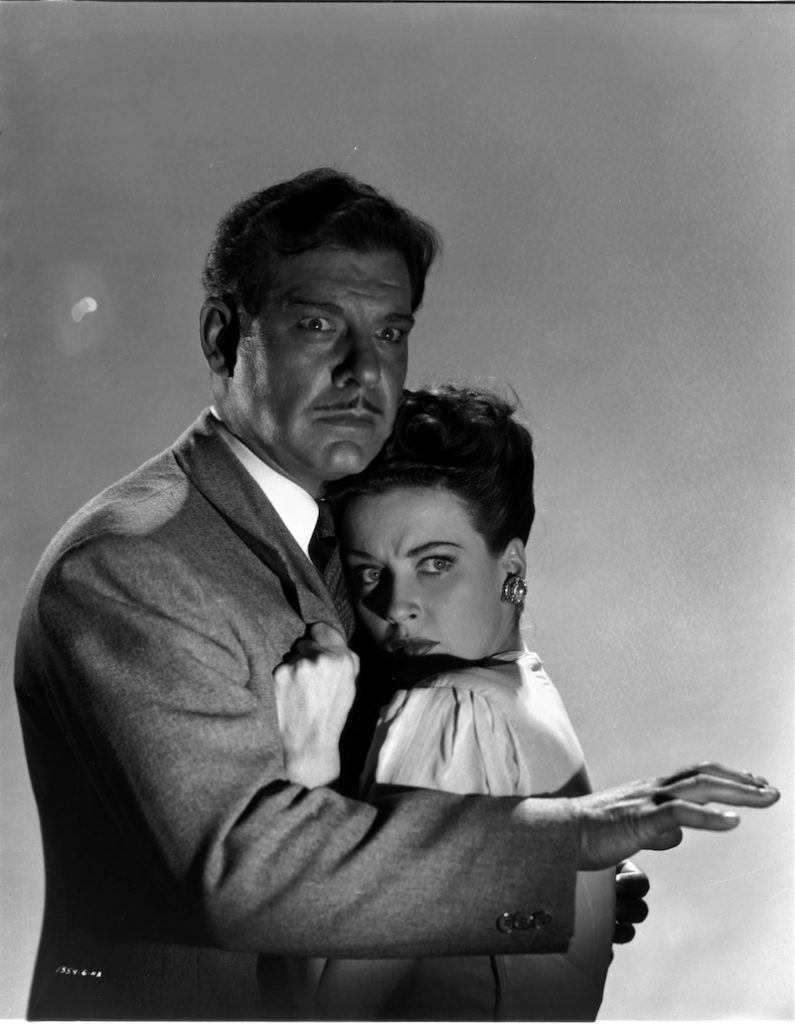
In truth, the movies never live up to this promise. The “psychological” aspect of the narrative is usually not much more than a parlour trick adding spice to an otherwise conventional story, and in one case (Strange Confession) it makes virtually no sense. Certainly, there seems to have been some fundamental confusion about what the Inner Sanctum series was actually supposed to be: it’s clear from each of the posters that it was marketed as horror, and the namesake radio series which preceded it had been more overtly horror-oriented, but despite that the films are essentially mysteries. Only occasionally does a hint of the supernatural poke through.
So they’re not great films (though they certainly have a solid enough fan base even today), and The New York Times was perhaps not far off the mark when it described Calling Dr Death as “mildly interesting but not thrilling.”
However, there’s historical interest in watching average rather than first-rate fare. And there’s also much to like in all of them, ranging from some surprisingly sophisticated subjects (academic plagiarism in Weird Woman, deceptive drug marketing in Strange Confession) to the frequently fine photography and editing, as well as the impressive costumes by Vera West—not least the male actor’s ties. West, art director John B. Goodman, and Chaney worked on the Inner Sanctum series throughout; so the former two must take some credit for the series’ visual consistency. (The obvious reuse of sets probably helped, too.)
There’s much less continuity among other personnel (although Reginald Le Borg directed the first three), which probably accounts for the varied quality of the tales themselves. Weird Woman, for example, is breathless silliness, while Strange Confession is verging on hard-edged sociological exposé.
You might not want 90-minutes or two-hours of an Inner Sanctum movie, and certainly the weaker ones come close to outstaying their welcome even with shorter running times… but, at their best, they’re gripping examples of what could be done with the latest in ’40s filmmaking techniques, even on a low budget. And if they’re never subtle, they can be compelling.
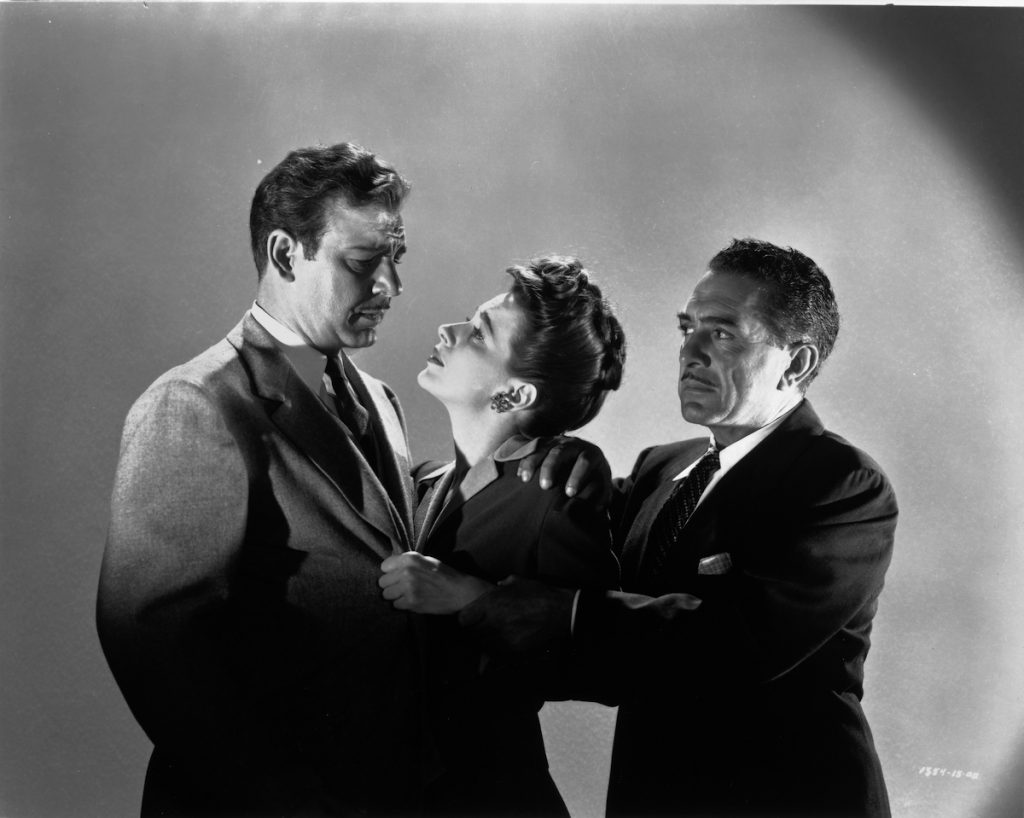

A doctor isn’t sure if he murdered his beautiful but wicked wife, and has his attractive nurse try to find the truth by hypnotising him.
The Inner Sanctum series starts as it’ll go on with Calling Dr Death, which mixes up-to-the-minute ideas with occasional touches of genuine originality, though they’re often let down by somewhat clumsy or heavy-handed execution.
The voiceover of Chaney’s thoughts, for example (a technique also employed elsewhere in the series), is overused and over-literal. But there are also some interesting developments of the concept; for instance, when the voices of others start intruding into his conscience as he cracks, and effective use is made of a phonograph recording of a hypnosis session. By speaking his thoughts into this out loud, Chaney externalises the voiceover, as it were.
As in other movies of the series, the screenplay is pedestrian, with barely any attempt made to conceal expository dialogue, and the title bears little relation to the story. But there are moments of genuine power in this tale of a man who fears that he’s committed murder, but isn’t sure, and if the first twist is predictable, the second certainly isn’t.
Standouts in the cast are Ramsay Ames as Chaney’s sneeringly nasty wife, and J. Carrol Naish as a slightly creepy detective. Chaney himself delivers the same performance he gives in every one of the six films: a rather hangdog, worried man who nevertheless finds sufficient strength to keep going amid adversity. If the frequent passivity of the Chaney characters doesn’t quite tally with their supposed achievements (they’re all highly successful men), he does give good torment.
USA | 1943 | 63 MINUTES | 1.37:1 | BLACK & WHITE | ENGLISH
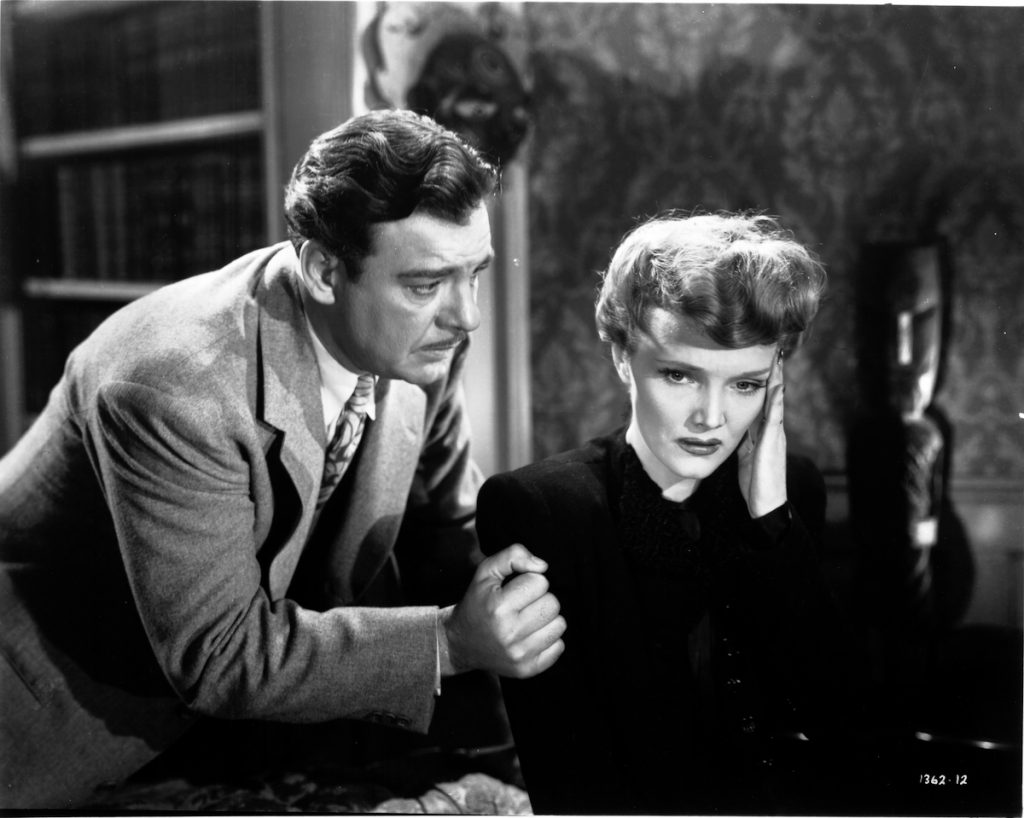

While on a South Seas trip, a professor falls in love and marries an exotic native woman, unaware the superstitious people who raised her believe she’s a supernatural being.
Based, loosely, on Fritz Leiber’s classic horror novel Conjure Wife, Weird Woman again presents Chaney as the man of rationality who can’t understand the apparent irrationality of the situation into which he’s been plunged.
The contrast is made vivid here through switches of scene from the safe American academic world of Chaney, a professor, to the exotic and dangerous “native” world of the South Pacific (an obvious studio set) where he meets his wife (a lively Anne Gwynne). She goes on to upset Chaney’s comfortable life with her magical practices, and some complicated plot devices are necessary to explain why she, the ‘weird woman’ of the title, is culturally Polynesian and yet obviously white.
As in most of the Inner Sanctum films, the plot is slightly over-complicated for 63-minutes, and might have benefited from the loss of one character. But on the plus side, Weird Woman is more varied in tone than Calling Dr Death, with genuine wit and colour to the dialogue (thanks perhaps to the academic setting) and some effective use of superimposition.
Elisabeth Risdon is also outstanding as a down-to-earth elderly bluestocking on the faculty of Chaney’s university, while Ralph Morgan is also noteworthy as another professor, a beaten man. The unintentional best line of the movie comes from Lois Collier, exclaiming over Chaney “there’s something so dynamic about him!” It’s perhaps not the adjective most viewers would choose.
USA | 1944 | 63 MINUTES | 1.37:1 | BLACK & WHITE | ENGLISH
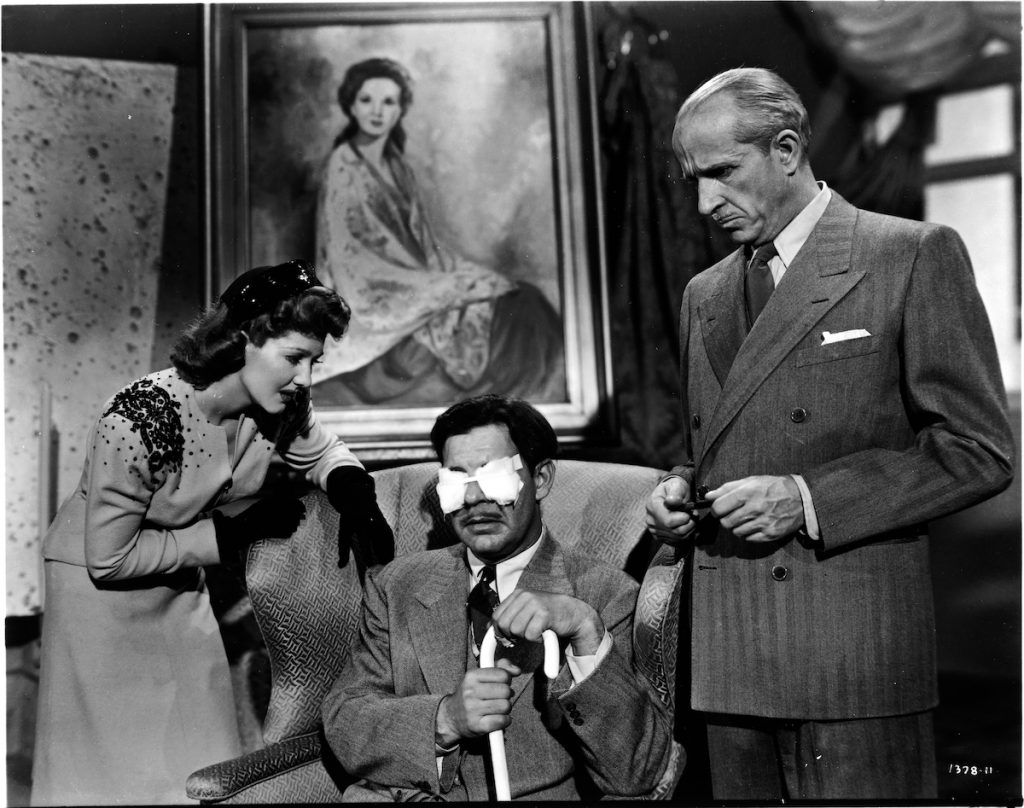

When an artist is blinded, his fiancée’s father offers an operation to restore his sight… but when the benefactor suddenly dies, the artist becomes a suspect.
Chaney here plays a painter, and it’s lovably typical of Inner Sanctum that the “masterpiece” about to crown his career is a piece of junk you might find in a bland hotel. However, his friend Alan (Paul Kelly) is a psychiatrist, providing the film with an easy entrée into the series’ favourite themes, and even if it’s less interesting than some of the other entries, Dead Man’s Eyes encapsulates many of Inner Sanctum’s strengths and weaknesses.
There’s a voiceover again, a slightly stilted script, one or two too many characters, and to modern eyes each character’s a bit similar-looking (making it hard to keep track of who’s who if the attention wanders). The plot is contrived, but again the twist isn’t what one would reasonably expect, and the photography is as slick as always.
The story hinges on the suspicious death of a man who’s promised to donate his eyes to the blinded Chaney for transplant; and Chaney, of course, becomes a suspect. Thomas Gomez stands out as the usual police detective, while Chaney’s over-acting after accidentally putting acid in his eyes is extraordinary.
Trivia: dialogue director Stacy Keach was the father of the actor of the same name.
USA | 1944 | 64 MINUTES | 1.37:1 | BLACK & WHITE | ENGLISH
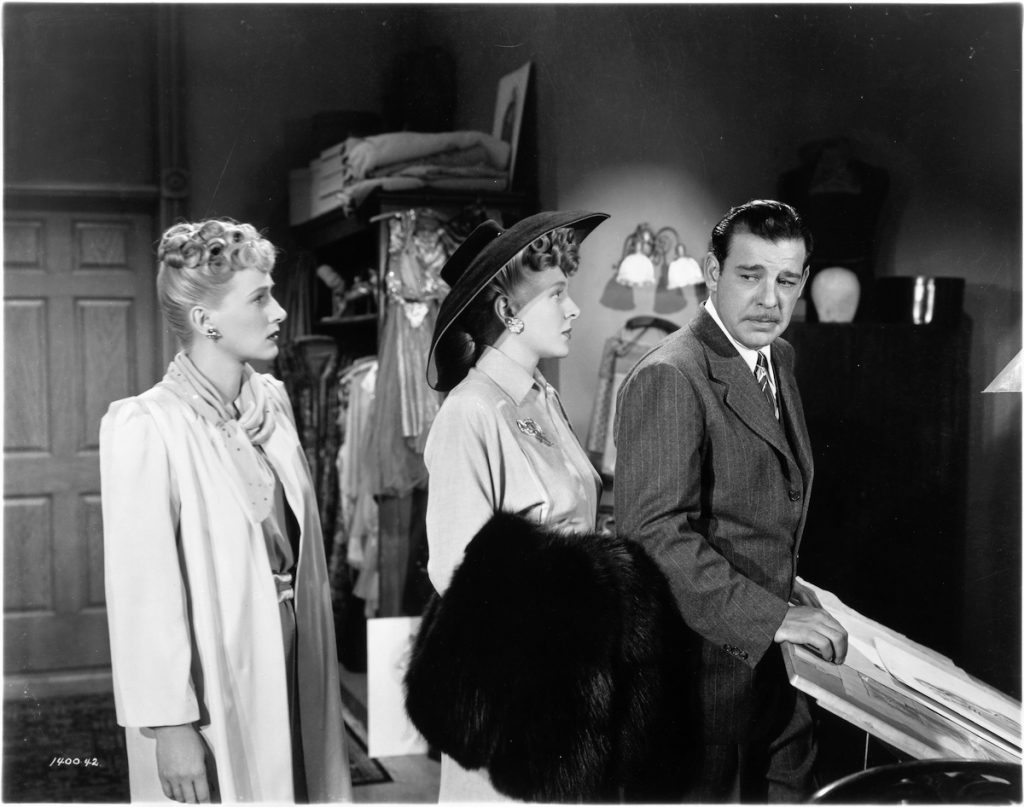

A stage mentalist involved in a mysterious death and a discredited plastic surgeon are among the assorted characters involved in mysterious goings-on in an eerie wax museum.
The Frozen Ghost is one of the best of the series, with a clever premise slightly reminiscent of Calling Dr Death. Here, Chaney is hypnotist “Gregor the Great”, trying to get himself arrested for murder after a man dies during his stage show. “I killed that man, killed him with my eyes, I know I did!” he declares.
It’s closer to horror than the others in feel, too, with much of it set in a wax museum managed by the sinister and ill-tempered Rudi (a rather Peter Lorreish Martin Kosleck, who loathed Chaney in real life, calling him a “dreadful old rude drunk” in the interview featured this disc). The convenient furnace in the museum’s workshop—no prizes for guessing how it figures at the climax—might even represent Hell.
The film holds one’s interest successfully for much of its runtime, at least until the dastardly plot against Chaney is revealed. The camerawork and editing are simple but effective here, too, with some disorienting angled shots at the opening, even if Inner Sanctum’s low budgets are painfully obvious in a café scene where the street beyond the windows is clearly back-projected.
USA | 1944 | 61 MINUTES | 1.37:1 | BLACK & WHITE | ENGLISH
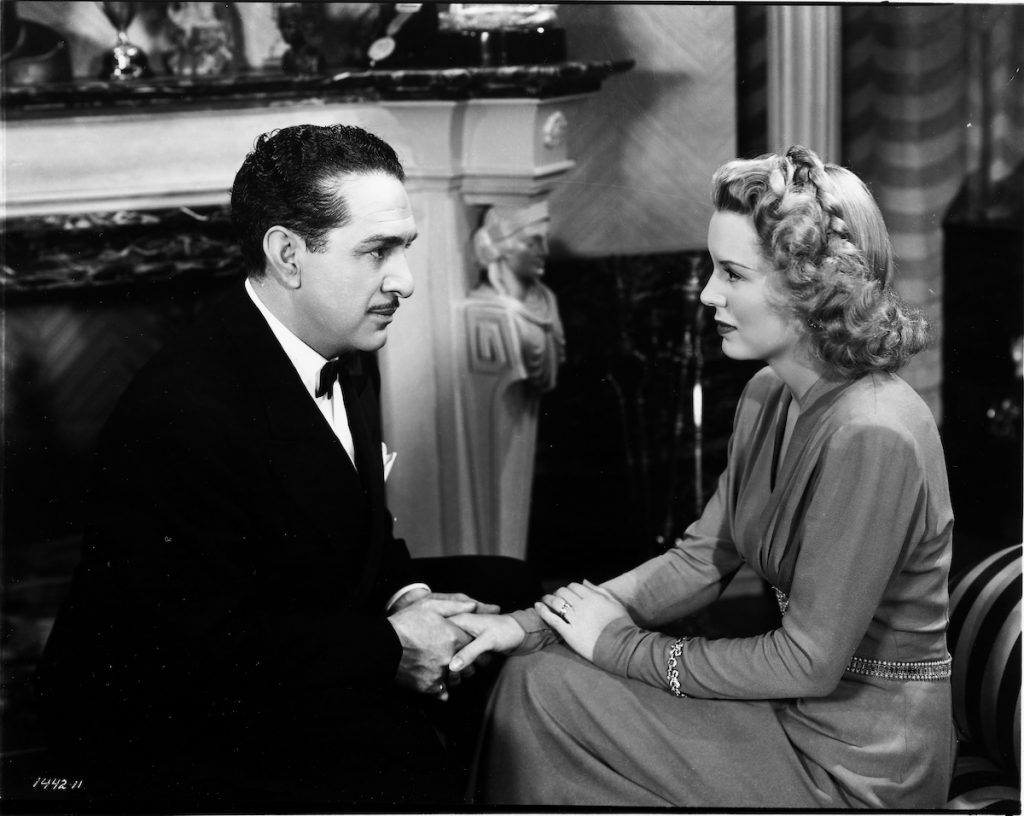

A scientist who is working on a cure for influenza is victimized by his unscrupulous boss, who releases the vaccine before it’s ready, resulting in tragedy.
Strange Confession is the only one of the series to be told using that favourite 1940s device: the flashback. The entire story is framed in Chaney’s “confession” to a lawyer friend. In reality it would’ve worked just as well without this, but one does get the sense that ambitions (and perhaps also budgets) increased slightly as the series progressed.
Along with The Frozen Ghost, it’s the highlight of the series, telling a genuinely impactful tale that pits dedicated, slightly unworldly scientist Chaney against his boss—the avaricious and duplicitous pharmaceutical entrepreneur Mr. Graham (a terrific J. Carrol Naish). Graham rushes an untested drug into production, making dubious claims for it before it has been perfected, with terrible personal results for Chaney.
Milburn Stone, notable as Chaney’s manager in The Frozen Ghost, reappears as a minion of Graham’s; Mary Gordon is also memorable as Chaney’s housekeeper.
The story idea is one with real potential and, at its best, Strange Confession exploits this in some engrossing scenes. Again, though, the visuals (a very expressionist opening, some slick editing) often work better than the screenplay. The opening is slow, one line is inserted to express the passing of time in an absurdly contrived way (“that’s the 158th box of candy you’ve bought from me… two a week, ever since I’ve been here…”) and the concluding attempt to link Strange Confession with the series’ overarching theme of psychological oddities utterly flops.
(Graham learned “power of transmission of the will” from a Hindu teacher in Bombay, and Chaney believed his own brain was in Graham’s head. No, it doesn’t make much more sense if you’ve seen the movie, either.)
USA | 1945 | 62 MINUTES | 1.37:1 | BLACK & WHITE | ENGLISH
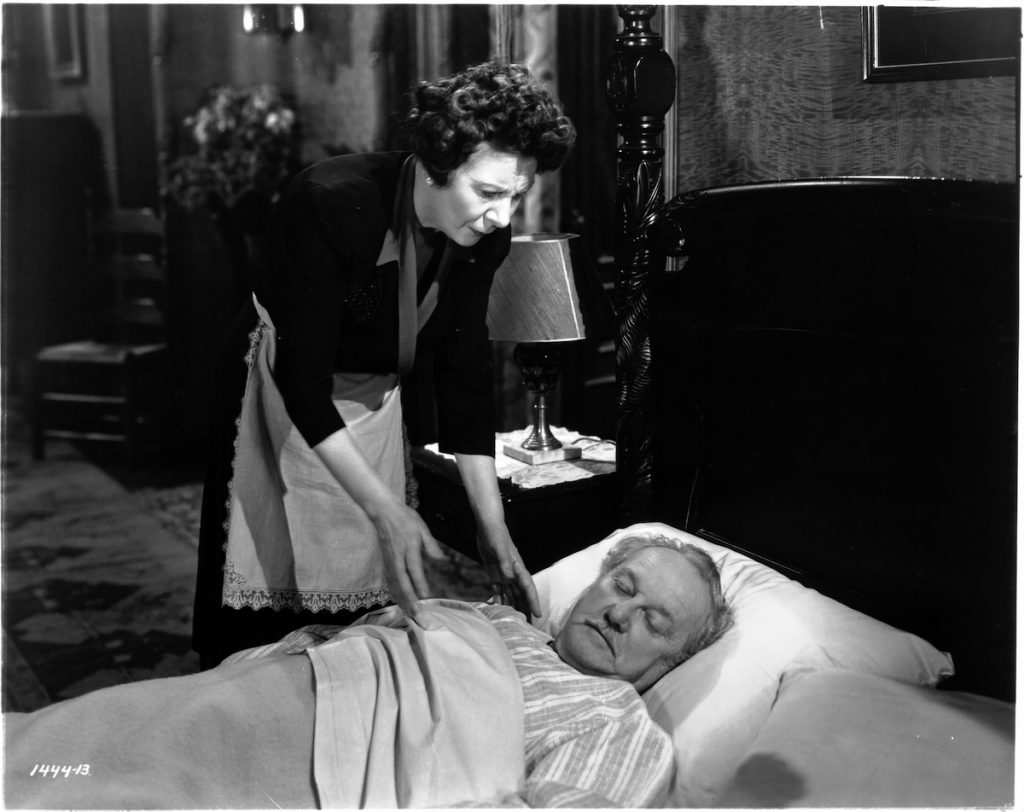

An unfaithful attorney is suspected of murdering his wife.
There’s a real surprise at the end of Pillow of Death, perhaps an even bigger surprise for someone watching Inner Sanctum Mysteries today as a series over two days rather than as separate movies over two years. Apart from that, though, it’s a pretty conventional big-old-mansion murder-mystery with a secret tunnel, lots of “obvious” killers, and a mild haunted-house overlay to distract the viewer from what’s really going on.
Chaney plays another lawyer here, accused of killing his wife with the titular pillow, but his part is smaller than in the other Inner Sanctum films. In fact, he’s absent from the screen for much of it, as the denizens of the mansion debate whether he could be a murderer or not. Notable among them are J. Edward Bromberg, scene-stealing as a medium whose spirit-world escapades play a critical role in revealing the real killer, and an amusing George Cleveland as the irascible man of the house.
It’s a rather weak conclusion to the series, especially coming after the two strongest films, with few of the imaginative touches that pop up (however inconsistently) in the others.
USA | 1945 | 66 MINUTES | 1.37:1 | BLACK & WHITE | ENGLISH

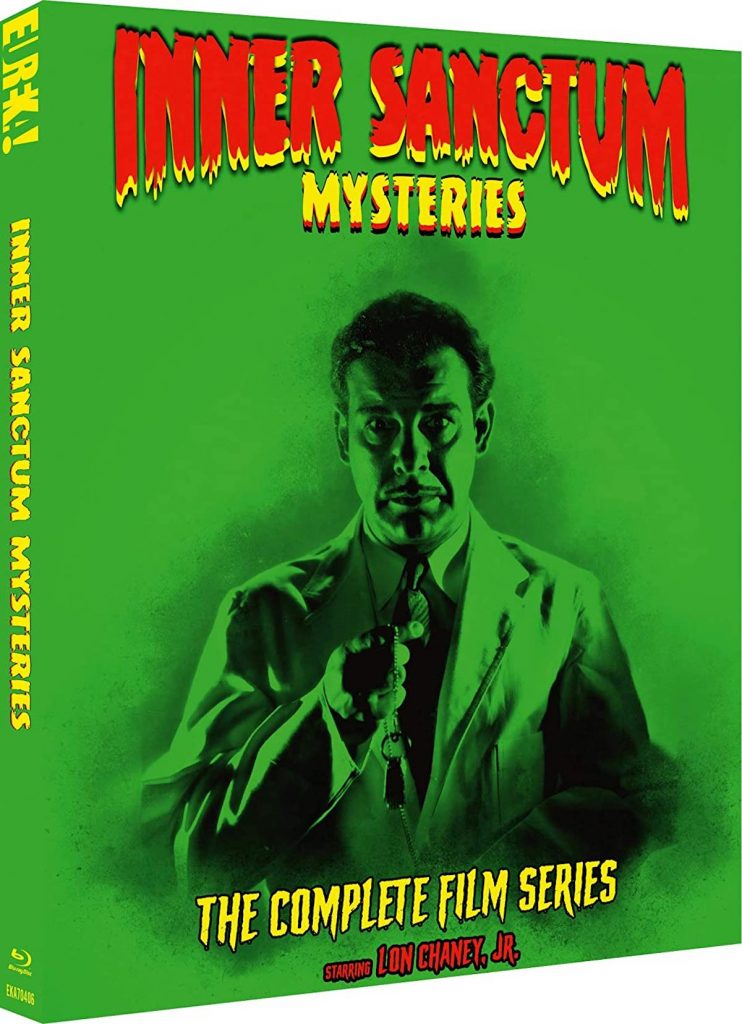
Eureka Entertainment’s transfers serve the high-quality photography well, with black blacks, white whites, and often lustrous greys. Audio is mono, of course, but consistently clear, and the subtitling of the movies is accurate.

directors: Reginald Le Borg (Death, Woman, Eyes) • Harold Young (Ghost) • John Hoffman (Confession) • Wallace Fox (Pillow)
writers: Edward Dein (Death) • Brenda Weisberg (story by W. Scott Darling; based on the novel ‘Conjure Wife’ by Fritz Leiber) (Woman) • Dwight V. Babcock (based on the story by Himan Brown) (Eyes) • Bernard Schubert & Luci Ward (story by Harrison Carter & Henry Sucher; based on the story by Himan Brown) (Ghost) • M. Coates Webster (story by Jean Bart; based on the story by Himan Brown) (Confession) • George Bricker (story by Dwight V. Babcock; based on the story by Himan Brown) (Pillow)
starring: Lon Chaney Jr. (Death, Woman, Eyes, Ghost, Confession, Pillow), J. Carrol Naish (Death, Confession) • Patricia Morison & Ramsay Ames (Death) • Anne Gwynne & Evelyn Ankers (Woman) • Acquanetta & Jean Parker (Eyes) • Brenda Joyce (Confession, Pillow) • Milburne Stone & Lloyd Bridges (Confession) • J. Edward Bromberg & Rosalind Ivan (Pillow).
